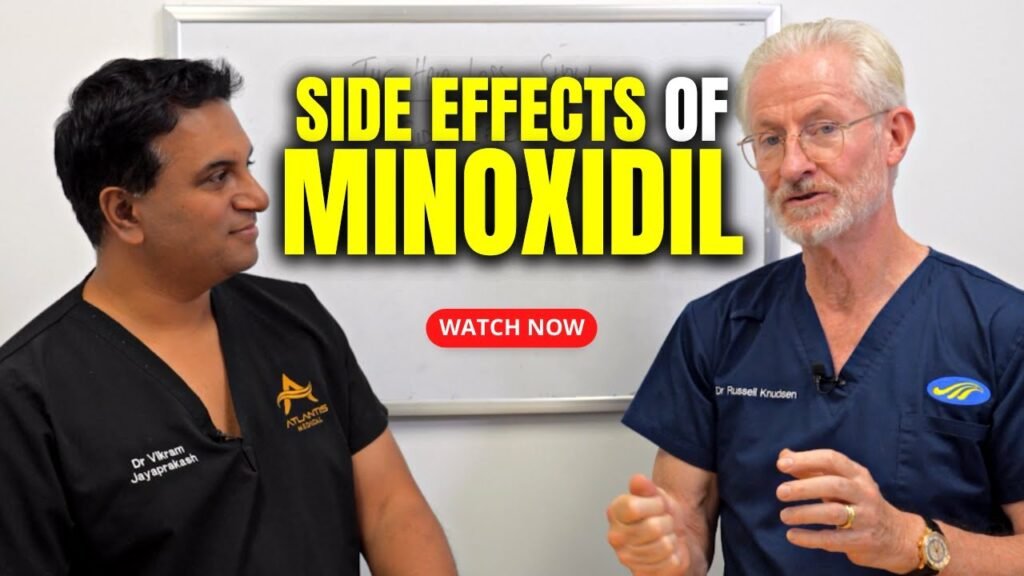Understanding Minoxidil: What Is It Used For?
Minoxidil is a well-known topical treatment primarily used to combat hair loss and stimulate hair growth. Initially developed as an oral medication for high blood pressure, its hair growth side effects led to the creation of topical solutions. Minoxidil is FDA-approved for treating androgenetic alopecia, commonly known as male or female pattern baldness, which affects a significant portion of the population. By applying minoxidil directly to the scalp, users can often experience an increase in hair density and a slowing of hair loss.
How Minoxidil Works
The exact mechanism by which minoxidil promotes hair growth is not fully understood, but it is believed to work by prolonging the anagen phase, the active growth phase of hair follicles. Minoxidil may also improve blood flow to the hair follicles, ensuring they receive more nutrients and oxygen, which can stimulate thicker, healthier hair strands. Typically available in concentrations of 2% and 5%, minoxidil is applied twice daily to the affected areas of the scalp, with visible results often appearing after consistent use for several months.
Other Uses of Minoxidil
While primarily used for scalp hair loss, minoxidil has been explored for other hair-related conditions. Some studies suggest its potential in treating alopecia areata, a condition characterized by patchy hair loss, although it is not officially approved for this purpose. Additionally, individuals with thinning eyebrows have used minoxidil off-label to enhance eyebrow density. Despite these alternative applications, its crucial to consult a healthcare professional before using minoxidil for non-approved treatments to ensure safety and efficacy.
How Does Minoxidil Work and Why Is It Popular?
Minoxidil is a widely recognized topical treatment primarily used for hair loss, particularly androgenetic alopecia, which is more commonly known as male or female pattern baldness. The exact mechanism of how minoxidil stimulates hair growth is not fully understood, but it is believed to work by prolonging the anagen phase, which is the active growth phase of hair follicles. By extending this phase, minoxidil encourages the follicles to produce longer and thicker hair strands. Additionally, it is thought to increase blood flow to the scalp, thereby enhancing the delivery of nutrients and oxygen to the hair follicles, which can further promote hair growth.
One of the reasons minoxidil has gained popularity is its accessibility and ease of use. Available over the counter in many countries, it comes in various formulations, including liquid solutions and foam, typically in concentrations of 2% or 5%. This allows users to select the strength and form that best suits their needs. Minoxidil is applied directly to the scalp, usually twice a day, making it a convenient option for many individuals looking to address hair thinning and hair loss. Its non-invasive nature and minimal side effects compared to other hair loss treatments also contribute to its widespread acceptance.
Moreover, minoxidil has been the subject of numerous clinical studies, which have demonstrated its efficacy in promoting hair regrowth in both men and women. The success stories and visible results reported by users have further fueled its popularity, making it a go-to solution for those seeking to combat hair loss. While results can vary from person to person, the potential for achieving noticeable improvement in hair density and coverage has made minoxidil a staple in the realm of hair restoration treatments.
The Link Between Minoxidil and Acne: What You Need to Know
Minoxidil, a popular topical treatment for hair loss, is well-regarded for its effectiveness in promoting hair growth. However, some users have reported experiencing acne breakouts after starting minoxidil treatments. Understanding the connection between minoxidil and acne can help you make informed decisions about its use. Although minoxidil itself is not directly linked to causing acne, the way it interacts with the skin can contribute to breakouts for some individuals.
How Minoxidil May Contribute to Acne
When applied to the scalp or facial area, minoxidil can sometimes lead to skin irritation. This irritation may manifest as dryness, itching, or redness, which can disrupt the skins natural barrier. A compromised skin barrier can lead to clogged pores and increased oil production, creating an environment conducive to acne development. Additionally, if the solution is not applied correctly, it may drip onto the face, further increasing the risk of acne in sensitive areas.
Tips to Minimize Acne When Using Minoxidil
To mitigate the potential for acne while using minoxidil, consider adopting a skincare routine that supports skin health. Use a gentle cleanser to remove excess oil and impurities without stripping the skin of its natural moisture. Incorporating a non-comedogenic moisturizer can also help maintain the skins hydration balance, reducing the likelihood of irritation. Ensure proper application of minoxidil by applying it directly to the scalp and avoiding contact with facial skin. If you experience persistent acne, consult a dermatologist for personalized advice tailored to your skin type and condition.
Factors Contributing to Acne When Using Minoxidil
Minoxidil is a popular topical treatment primarily used for hair growth; however, some users report experiencing acne as a side effect. One of the primary factors contributing to acne when using minoxidil is the formulation of the product itself. Many minoxidil solutions contain alcohol, which can dry out the skin and disrupt the natural oil balance. This can lead to increased sebum production as the skin attempts to compensate for the dryness, potentially resulting in clogged pores and acne outbreaks.
Another factor is the potential for skin irritation caused by minoxidil. Individuals with sensitive skin may experience redness, itching, or flaking upon application. This irritation can exacerbate acne conditions by triggering an inflammatory response. Additionally, the application process itself might contribute to acne if the product spreads to areas of the skin that are more prone to breakouts, such as the forehead or cheeks.
Moreover, individual skin type plays a crucial role in how minoxidil affects the skin. People with oily or acne-prone skin may be more susceptible to breakouts when using minoxidil, as the product can exacerbate existing skin conditions. It is also important to consider the hygiene practices associated with applying minoxidil. If hands are not properly washed before application, or if the applicator is not kept clean, bacteria can be introduced to the skin, increasing the likelihood of acne development.
Effective Ways to Manage Acne Caused by Minoxidil
If youre experiencing acne as a side effect of using minoxidil, there are several strategies you can employ to manage and mitigate these skin concerns. One effective approach is to incorporate a gentle skincare routine that prioritizes cleansing and hydration. Use a mild, non-comedogenic cleanser to wash your face twice daily, ensuring that it effectively removes excess oil and impurities without stripping your skin of its natural moisture. Following up with a lightweight, oil-free moisturizer can help maintain the skins balance and prevent the overproduction of sebum, which can exacerbate acne.
Consider Adjusting Your Application Technique
Another practical way to manage acne caused by minoxidil is to adjust how you apply the product. Ensure that youre using the recommended dosage and applying it only to the scalp, avoiding any contact with the face or other acne-prone areas. If you find that the liquid formulation tends to drip onto your face, you might consider switching to a foam version, which is less likely to run and cause irritation. Additionally, washing your hands thoroughly after application can prevent any accidental transfer of minoxidil to your facial skin, reducing the risk of acne flare-ups.
Incorporate Targeted Treatments
Incorporating targeted acne treatments into your routine can also be beneficial. Look for products containing salicylic acid or benzoyl peroxide, which can help to unclog pores and reduce inflammation. However, its important to use these treatments sparingly and monitor your skins response, as overuse can lead to dryness or irritation. Consulting with a dermatologist can provide personalized advice and recommendations, ensuring that your acne management strategy aligns with your skin type and the specifics of your minoxidil use. By adopting these tailored approaches, you can effectively manage acne while continuing your hair regrowth journey.


